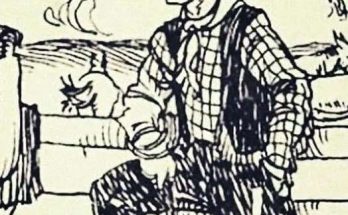In today’s fast-paced world, smartphones have made it easier than ever to access entertainment and education. But amidst the sea of information, nothing can quite challenge and sharpen your mind like a good riddle or brain teaser. Recently, a riddle known as the ‘woman in a boat riddle’ has taken the internet by storm, leaving even seasoned riddle-solvers scratching their heads. Unlike other puzzles that rely on intelligence, this one tests your attentiveness and creativity. Let’s dive into the riddle and explore some other clever brain teasers along the way.
The Woman in a Boat Riddle

Let’s begin with the riddle that’s captivating everyone online:
“There is a woman in a boat, on a lake, wearing a coat. If you want to know her name, it’s in the riddle I just wrote. What’s her name?”
At first glance, this riddle seems to play tricks on the mind. Many people overcomplicate their thought process, assuming the answer must be hidden deep within the phrasing. But here’s the thing: the answer is much simpler than you think.
Answer: Her name is ‘There’.
Yes, it’s as simple as that! The line “it’s in the riddle I just wrote” is literally pointing to the word “There” as her name. While “There” might not sound like a typical name you’d hear on the street, the riddle plays with grammar and word placement to throw you off. It’s a classic case of misdirection, where the simplicity of the answer is hidden in plain sight. This riddle is not about overthinking but about paying attention to every word with precision.
The Power of Simplicity in Riddles
Riddles like the ‘woman in a boat’ are so engaging because they mislead the reader into looking for a complicated solution, when, in fact, the answer is incredibly straightforward. It teaches a valuable lesson in problem-solving: sometimes, the most obvious answer is the correct one.
The charm of this riddle lies in how it tricks us into overthinking. It proves that even when you think the solution is far away, it’s often right in front of you. Ready for more? Let’s keep the momentum going with two more brain teasers that will keep your brain buzzing.
Riddle 2: Sons and Daughters

Next up is a riddle that seems to require some mathematical thinking, but it’s really about attention to detail.
“Mr. Smith had four daughters. Each of his daughters had a brother. How many children does Mr. Smith have?”
At first, this might seem like there’s a hidden trick or not enough information to answer. But the riddle is much simpler than it appears.
Answer: Mr. Smith has 5 children.
Why? Well, even though the riddle says each daughter has a brother, it doesn’t mean there are multiple brothers. It simply means there’s one brother shared among the four daughters. If Mr. Smith had four daughters and each had a brother, then Mr. Smith has five children total—four daughters and one son. It’s a clever way of testing your ability to avoid assumptions.
Riddle 3: London Bridge

This next riddle requires a bit of wordplay, making it more challenging and testing your skills in pronunciation and interpretation:
“I met a man on London Bridge. He tipped his hat and drew his name. He cheated at the guessing game. What was the man’s name?”
Here, the trick lies in how you read and interpret the line, “and drew his name.” It’s a classic riddle that’s all about listening closely to the phrasing.
Answer: The man’s name is Andrew.
If you read the line aloud, “and drew his name” sounds a lot like “Andrew’s his name.” The key to solving this riddle is noticing how words can be combined phonetically to reveal the answer. It’s another example of how riddles can play tricks on the mind, leading you down one path when the answer is hidden in plain speech.
Riddles like the “woman in a boat” or “London Bridge” emphasize the joy of simplicity hiding behind complexity. These riddles don’t require advanced math skills or obscure trivia knowledge. Instead, they challenge you to break down information and think carefully about each word, often revealing that the answer was there all along.
This kind of mental workout is not only satisfying but also helps in everyday life. It’s a reminder to not always overthink situations and to trust the most straightforward solution. After all, whether in riddles or life, the simplest explanation is often the right one.
Riddles, whether short and sweet like the “woman in a boat” or slightly more complex like “London Bridge,” offer an entertaining and valuable way to challenge your mind. They teach us to think carefully, pay attention to details, and find joy in the simple yet profound solutions that hide in plain sight.
Next time you’re looking for a quick brain teaser to get your mind pumping, remember these riddles. Not only will they sharpen your mind, but they’ll also remind you of the fun in thinking outside the box. So, are you ready to share these riddles and stump your friends? Go ahead, give it a try, and see how quickly they figure out the woman’s name in the boat!



